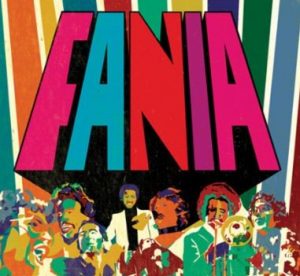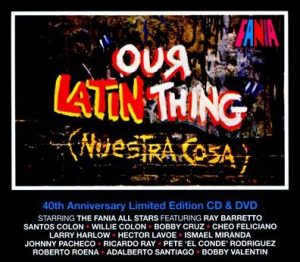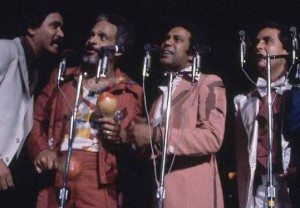There is a lot to celebrate and reflect about Fania’s 50th anniversary. Fania Records is synonymous with Salsa music and showed us both the best and the worst of what a record label can do.
Fania did not create Salsa music. However, they are in great part responsible for the formidable boom of the Salsa music genre. It made many of its stars, reunited them in one of the most amazing All-Stars bands in the world, and then exploited them almost to extinction.
Now Fania Records, which has been bought two or three times, is a collectors record label. It’s dedicated to re-releasing most of the material it has kept in its vaults for 50 years. Additionally, it makes new compilations of that music.
The Good: Fania as a Salsa Music Boom Box
I’m not going to bore you with the beginnings of Fania in the 60’s by Johnny Pacheco and Jerry Masucci. These two guys saw a need to create a record label that would explode the new developing genre. They also had the vision to understand how to make and commercialize Salsa artists and bands.

Salsa music was urban music. It took the rhythms of Cuba, Puerto Rico, Brazil, Africa and other Latin American countries and added a new type of lyric and sound. The lyrics became more contemporary to what was happening in the 60´s and 70´s. In doing that, it left behind the “Manisero” and “El Negro Bembon” for “Juana Peña” and “Vamonos Pa’l Monte”.
The sound changed as well. The jazz influence brought more brass to Salsa music. Some bands went with a more Cuban typical sound, influenced greatly by Arsenio Rodriguez, Arcaño y Sus Estrellas, and others. Other bands experimented with new sounds and arrangements. Some sounded great, others awful, but Salsa lovers danced to both regardless of the sound.
The Fania All Stars Exports Salsa to the World
Fania had it good with its combination of artists. They had bandleaders that played various instruments, very talented musicians, and a great lineup of singers.

The marketing machine Fania Records put together was 2nd to none, and catapulted the label and its artists. The movie “Our Latin Thing” probably had a much more far reaching impact than anyone could imagine at the time. It turned all artists in the “Live at Cheetah” album in super stardom status, and the band became the prime band of Salsa! No one did it better!
Adding Celia Cruz to the band for the following album (“Live at Yankee Stadium”) gave them even more popularity. Shortly after they began traveling to Africa (to a concert preceding the Ali-Foreman fight at Zaire), Japan, and other countries.
The crossover move also paid off from a marketing perspective, but didn’t score many points with core Salsa music fans. Their album “Delicate and Jumpy” was a disaster, but Fania adjusted the formula and subsequently made better albums although none great, until they finally got back to doing Salsa.
The Bad: Exploitation of Fania Artists
The album sales were great, but the money didn’t follow down to the Salsa artists. Artist were paid small fees for recordings that sold thousands. In addition, sale numbers were never revealed to the artists. When they did reveal them, they were grossly under estimated. Composers were not paid the royalties they rightfully deserved for their songs.
With all of this going on, the ship began to make water. Artist began to flee the label, starting with Bobby Valentin who formed his own recording label (Bronco Records). Others followed suit, going to different labels. Soon all the geese of the golden eggs were gone, and the label went spiraling downwards.
The Ugly: New Life to an “Old-Stars”
Larry Harlow took it to reunite some of the musicians that were left from the golden era of Salsa. He created the Legends of Fania, which continues to perform today. Finally, what was left of the Fania All Stars, along with others that never were part of the group (like Andy Montañez), began doing sporadic shows again.

The new shows by the remains of the Fania “Old” Stars were not a shadow of what the band did at it’s prime. It became a dreadful display of singers going through their singing turn, but no interaction with the rest of the singers on-stage.
Look, I know every one has the right to make a living, and the old members of the Fania All Stars are just trying to do that. The are selling nostalgia to the many Salsa fans they had back in the 60’s, 70’s, and 80’s. I guess there’s nothing wrong with that. I just wish they did it in a format that would showcase a team of old-timers instead of a display of antiques.
Fania Records at 50 Years
Many years went by after the Fania label collapse before someone had the insight to buy the label and its archives in order to continue selling the old recordings. The plan to profit from these recordings didn’t work as well as expected and the label was sold again.
The Fania record label is now under a stable ownership that has been re-releasing old albums in digital format, as well as making new compilations of artists.
For me, Fania marked a turning point in Latin music by catapulting Salsa to new heights of popularity around the world for all to enjoy!
With that, I salute Fania in its 50th anniversary!

